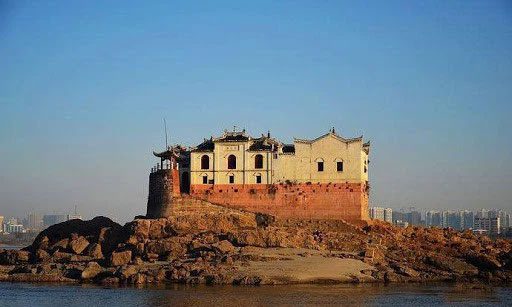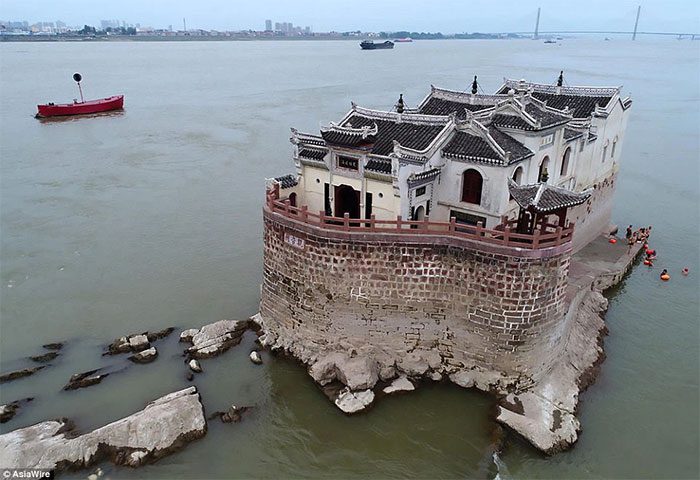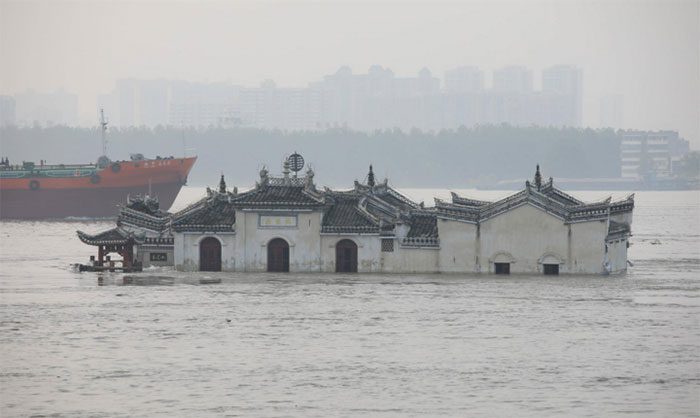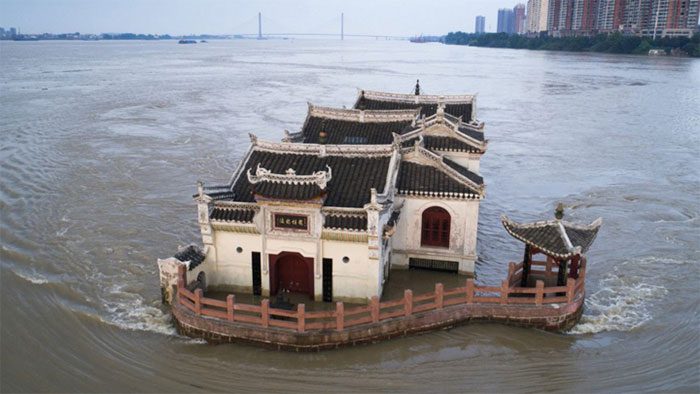In the context of Central and Southern China enduring the most severe flooding in years, forcing residents to evacuate and causing numerous architectural structures and homes to collapse or suffer significant damage, social media recently showcased many images of a temple situated on the Yangtze River, standing tall and sturdy amidst the floodwaters.
The Guanyin Temple stands firm amidst the floodwaters of the Yangtze River.
It is known that this is the Guanyin Temple, located in Yichang, Hubei Province – about 80 km by river from Wuhan. In the video, viewers can see the Guanyin Temple submerged in floodwaters on the Yangtze River, yet despite the swift and powerful current, this 700-year-old temple remains steadfast and largely unaffected.




Images of Guanyin Temple on the Yangtze River in Hubei.
Guanyin Temple (also known as Longban Temple) was first built in the 13th century during the Song Dynasty of China and was renovated and rebuilt during the Yuan Dynasty.
The temple was completely destroyed in the sixth year of the Jiajing era of the Ming Dynasty (1527), after which it was reconstructed by the county magistrate Xu Sheqing on a larger scale, adding the Guanyin Pavilion and Chunyang Tower. It was once again repaired and reinforced in the third year of the Tongzhi era of the Qing Dynasty (1864) and has stood to this day.
Thanks to its solid foundation, built on a rocky island in the middle of the Yangtze River, the temple has stood proudly amidst the river’s currents for centuries. Even the historic floods of 1998 and 2017 had little impact on this ancient temple.
The temple measures 24 meters in length, 10 meters in width, and 14 meters in height, consisting of two main floors with many small white-painted windows and a moss-covered tiled roof.
Ms. Hoang Tuyet Cam, a specialist from the Cultural Management Department of the Yichang City Museum, noted that Guanyin Pavilion is built on a solid foundation known as the Longban Rock. Additionally, in front of the temple, there is a curved wall that provides protection. The arc shape of the wall helps regulate the water flow and reduces the water force, ensuring that the structure behind the wall experiences significantly less pressure.
This is why, over the past centuries, the temple has remained standing despite countless major floods. Notably, the catastrophic floods of 1998 and 1954 on the Yangtze River resulted in approximately 30,000 deaths. Even more devastating were the record floods of 1911, which claimed the lives of around 100,000 people.



When the floodwaters rise, the temple becomes inundated, leaving only the high windows exposed. It is not until the dry season, when the river level drops, that the entire temple emerges, standing tall in the river.
Additionally, Guanyin Temple is known as the “first temple on the Yangtze River.” According to heritage conservation experts, the temple’s furnishings have been moved, and all doors have been opened to mitigate the impact of the water on this sacred site.





















































